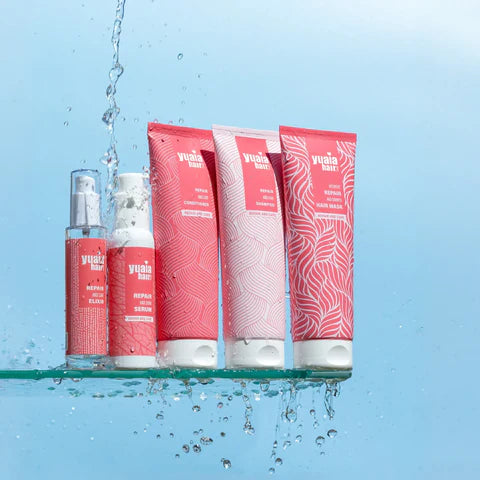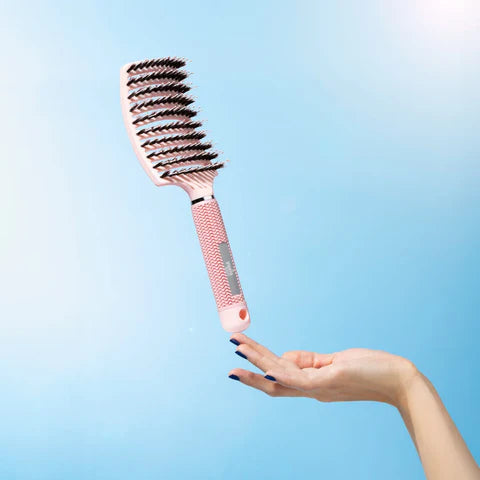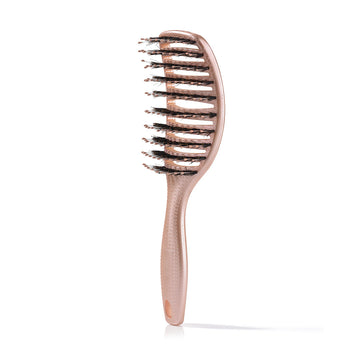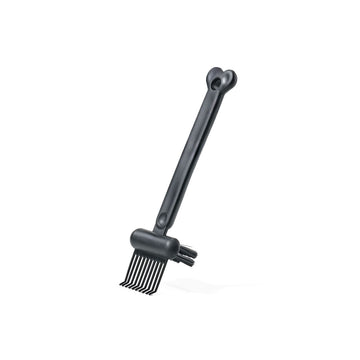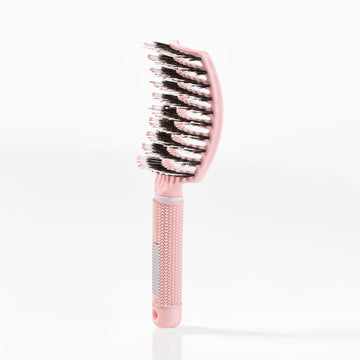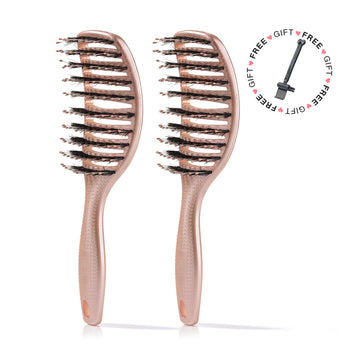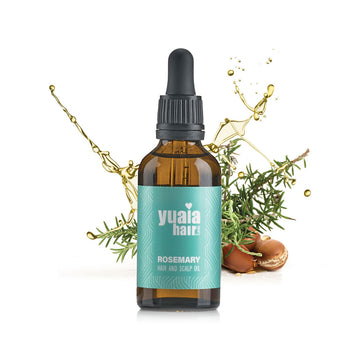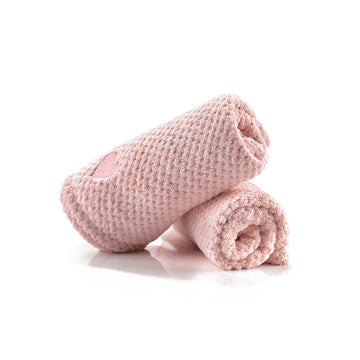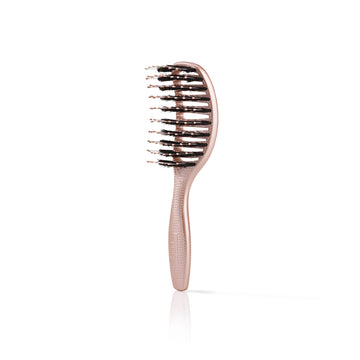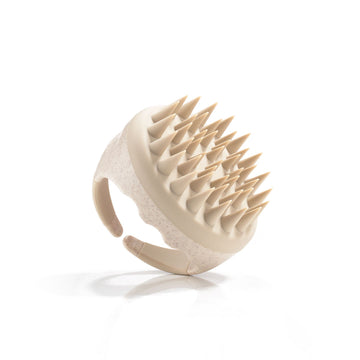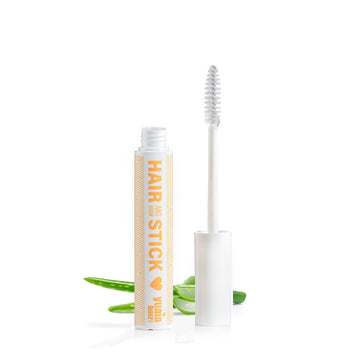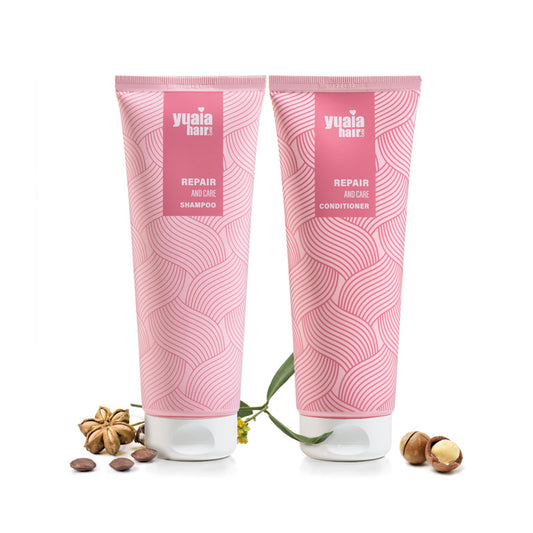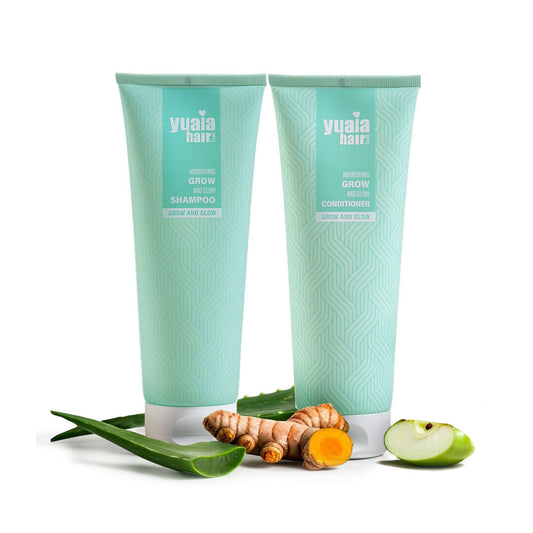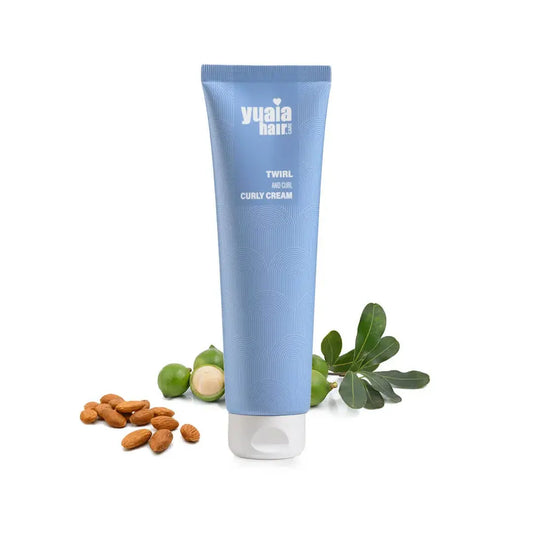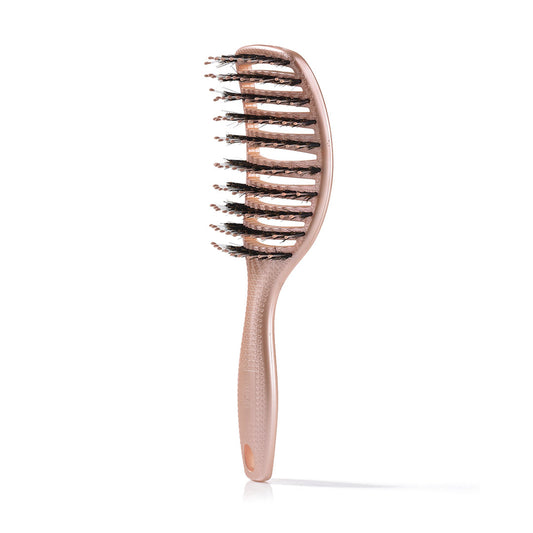
Can split ends travel up the hair shaft? Understanding the damage and prevention

by Nanna Bundgaard | 30. July 2025 | Reading time: 5 minutes
Read more about the authorSplit ends are a common issue that many people face, often unaware of the extent of the damage they can cause. While it's well-known that split ends occur at the tips of the hair, many are surprised to learn that they can actually travel up the hair shaft, leading to more extensive damage. This progression can compromise the health of your hair, making it important to understand how split ends develop and how to prevent them from causing further harm.
What are split ends?
Split ends, scientifically known as trichoptilosis, occur when the hair's protective outer layer, the cuticle, is damaged. This damage allows the inner structure of the hair to split or fray, typically starting at the ends of the hair shaft. The result is a frayed appearance that can make hair look unhealthy and unkempt.
Can split ends travel up the hair shaft?
Yes, split ends can indeed travel up the hair shaft. Once the cuticle is compromised, the splitting can extend toward the root, affecting larger sections of the hair. This process doesn't impact hair growth from the scalp but can make it difficult to retain hair length. As the hair breaks higher up the shaft, it can appear thinner or shorter, which is why addressing split ends early is important for maintaining hair health.
The importance of understanding split end progression
Understanding how split ends progress is key to maintaining healthy hair. By recognizing the signs early and taking preventive measures, you can avoid more significant damage. Regular trims and a gentle hair care routine are essential steps in preventing split ends from traveling up the shaft. Additionally, using nourishing hair products that support the hair's structure can help maintain the integrity of the cuticle and reduce the risk of split ends.
For those looking to enhance their hair care routine, incorporating products that protect and nourish the hair can be beneficial. For instance, using our heat protectant spray can help shield your hair from damage caused by styling tools, further preventing split ends.
Impact on hair health and length retention
While split ends do not directly affect the growth of hair from the scalp, they play a significant role in length retention. As split ends travel up the hair shaft, they weaken the hair, leading to breakage that can occur higher along the shaft. This breakage results in hair that appears thinner or shorter, as the damaged sections are lost before they can reach their full length. Maintaining hair health involves a proactive approach to managing split ends, ensuring that the hair retains its length and density.
Types of split ends and their progression
Split ends come in various forms, each indicating different levels of damage. The most common type starts at the tip, where the hair naturally experiences more wear and tear. However, in more severe cases, splits can occur along the entire length of the hair shaft, a condition known as schizotrichia. This type of damage is often seen in hair that has been subjected to excessive chemical treatments or environmental stressors. Understanding these variations helps in identifying the right care strategies to prevent further damage.
Preventing split ends from traveling up the shaft
Prevention is key when it comes to managing split ends. Regular trims are essential to remove damaged ends before they can progress further up the shaft. Additionally, adopting a gentle hair care routine that minimizes stress on the hair can significantly reduce the occurrence of split ends. Using sulfate-free, silicone-free formulas supports the health of the cuticle, reducing the risk of splits. Our Grow and Glow and Repair and Care lines offer nourishing options that help maintain the integrity of the hair.
For those with curly hair, maintaining moisture is crucial to prevent split ends. Our Twirl and Curl curly cream is designed to enhance and define curls while providing the necessary hydration to keep the hair cuticle intact, thus preventing split ends from forming.
Get a 10% discount code sent to you
Receive the best tips and tricks for your hair from Lotte and Nanna 🥰
How to manage and treat existing split ends
Managing existing split ends requires a combination of targeted treatments and protective measures. While trimming remains the most effective way to remove split ends, there are several strategies to minimize further damage and maintain hair health. Using nourishing products that reinforce the hair's structure can help prevent the progression of splits. For instance, incorporating oils like rosemary oil can provide essential nutrients that strengthen the hair shaft and protect against breakage.
Additionally, adopting a protective hair care routine is crucial. This includes using a gentle detangling brush to minimize stress on the hair, especially when it's wet. Our Curvy Brush is made to glide through hair smoothly, reducing the risk of tugging and breakage. Protective styling and the use of hair-friendly accessories can also help shield the hair from environmental stressors and mechanical damage.
FAQs: Common concerns about split ends
Do split ends stop hair growth?
Split ends do not stop hair growth from the scalp. However, they can impede length retention, as the hair may break higher up the shaft, giving the appearance of slower growth or shorter hair.
How often should I trim my hair to prevent split ends?
It is generally recommended to trim your hair every 6-8 weeks to prevent split ends from progressing up the shaft. Regular trims help maintain healthy hair and prevent further damage.
What's the best way to detangle hair to avoid split ends?
To avoid split ends while detangling, use a wide-tooth comb or a gentle brush like our Curvy Brush. Start detangling from the ends and work your way up to the roots, being careful to minimize pulling and breakage.
Get a 10% discount code sent to you
Receive the best tips and tricks for your hair from Lotte and Nanna 🥰
 2-5 day delivery
2-5 day delivery
 25.000+ satisfied customers
25.000+ satisfied customers
 Satisfaction Guarantee
Satisfaction Guarantee



